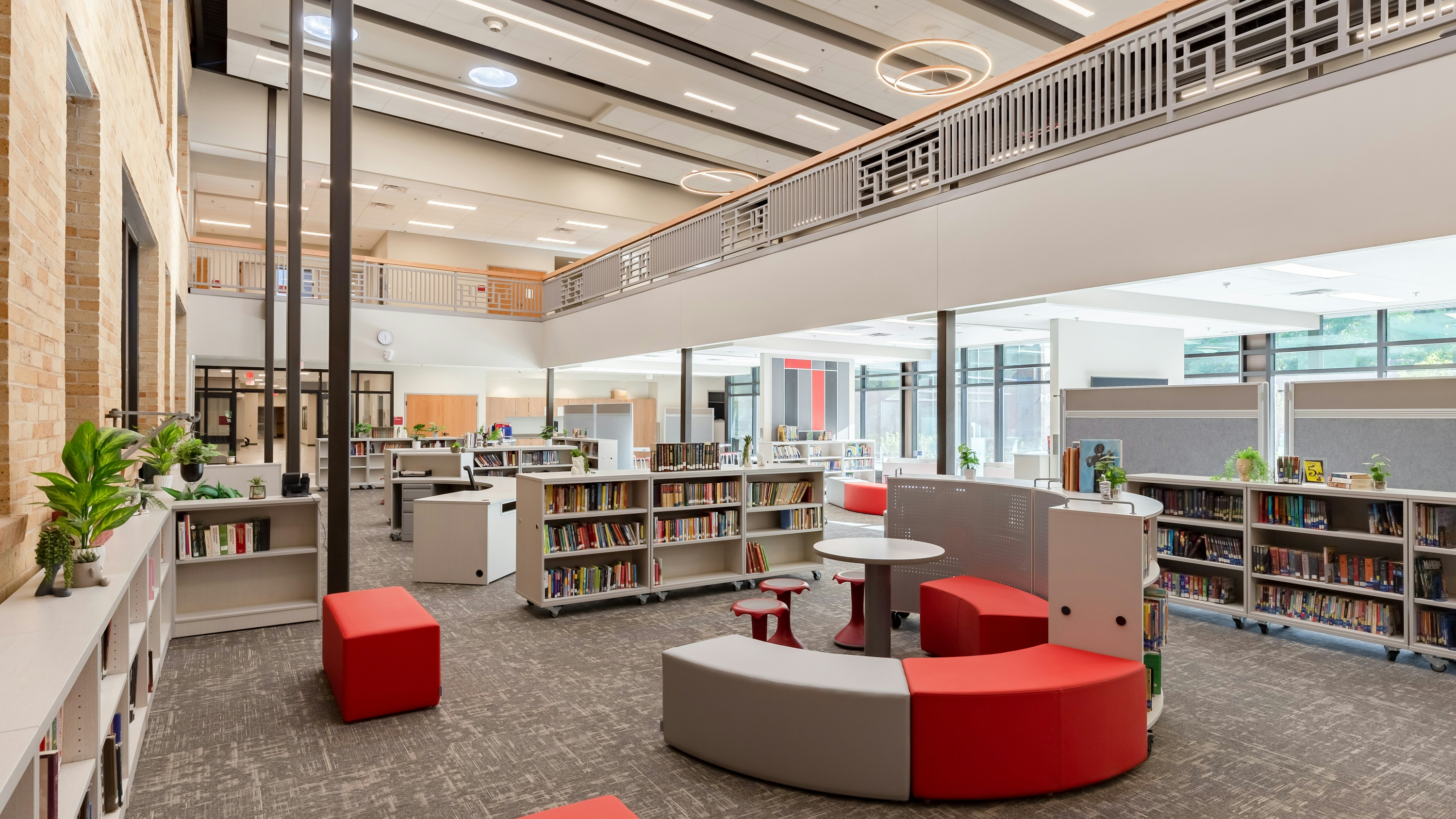

In school districts throughout the country, education leaders are broadening the definition of what makes a classroom truly supportive. Beyond the familiar priorities of lighting, layout and safety, a new dimension is gaining attention: sound. Once overlooked, sound is now recognized as essential to how students learn and how teachers connect.
For decades, acoustics were treated as an afterthought in school design. Today, research is bringing sound to the forefront, recognizing it as a critical factor that directly influences learning, focus and student well-being. At Wold, we help districts design schools where thoughtful acoustic strategies reduce distractions, improve comprehension and create spaces where every student can thrive.
Many studies also indicate that schools with better acoustic design show improved attendance rates and reduced teacher turnover. Following Colorado schools’ adoption of the 2021 International Building Code (IBC) acoustic requirements and growing attention from sustainability and wellness programs like LEED, sound is no longer just background noise. It’s recognized as essential to improving comprehension, reducing anxiety and supporting student well-being in learning environments, making acoustics both a practical and compassionate priority in education.


Start with students’ needs
Before designing spaces, it’s important to understand how students experience sound. Academic success isn’t possible when students are distracted by noise or struggling to hear or process information. Background research by Wold shows that poor acoustics can cause students to miss up to 25% of spoken content in noisy classrooms, and every 10-decibel increase in background noise corresponds to a 5-7% drop in comprehension scores.
Students with hearing impairments, learning differences or non-native language backgrounds are disproportionately affected, particularly in areas like Colorado with many Spanish-speaking learners. To be effective, acoustics must be considered from the onset of design planning, as early decisions have lasting impacts on student outcomes. Quiet, intentionally-designed acoustic environments give all students the chance to flourish. Additionally, schools with better sound environments report higher attendance, reduced teacher turnover and stronger engagement across the student body.
Loud and quiet: Balancing a spectrum of sound
Modern schools are moving beyond outdated “padded rooms” toward wellness-focused spaces that support mental health and emotional regulation. Calming areas with soft lighting, beanbags and soothing music provide restorative zones for students who experience sensory overload. These spaces not only reduce stress but also allow students to re-engage in learning with focus and confidence by accommodating a wider range of student needs.
However, schools also need to accommodate active, high-energy areas like gyms, cafeterias and makerspaces, which require different acoustic solutions than quiet zones. Districts can incorporate a layered approach to acoustics by using sound-absorbing materials like acoustic ceiling panels, soft flooring and wall treatments to reduce echo and control noise levels. In flexible multipurpose spaces, movable partitions, sound-rated doors and zoned lighting can help adjust both the volume and the mood of the space, allowing it to seamlessly transition between large assemblies, small group collaboration and quiet, focused work.
Flexible spaces, thoughtful sound
Open-concept designs are increasingly popular, but without careful planning, noisy and quiet zones can interfere with each other. Partial-height walls, lowered ceilings and material variation can create subtle separation that minimizes sound transfer while maintaining visual connections and supervision. The result is a school that feels open, collaborative and supportive – without sacrificing speech clarity or focus.
Every learning space serves a different purpose, and its sound quality should reflect that. Classrooms benefit from short reverberation times that make speech clear and easy to follow. Music rooms, on the other hand, come to life with longer reverberation that adds warmth and fullness. Special education and sensory-support spaces require quiet, calming environments that reduce stress and distraction. By layering these strategies, schools can create inclusive environments where every student’s auditory needs are met, providing them the opportunity to fully engage.


Sound solutions: Where design meets performance
Additional studies show that improved acoustic design can boost student outcomes by up to 16%, while poor acoustics impair speech perception, reading comprehension and cognitive performance. So, what can we do to foster inclusive learning environments through acoustic design?
When we design for the future of learning, every student gets a seat at the table. Acoustics are an integral part of creating schools that support today’s students. From classrooms to common spaces, quiet zones to high-energy cafeterias, thoughtful acoustic design increases focus, mental health and well-being among young learners. When districts consider sound alongside lighting, layout and technology, they create environments that are not just functional but genuinely nurturing.
The bottom line: The best learning spaces don’t just look inspiring; they sound supportive.